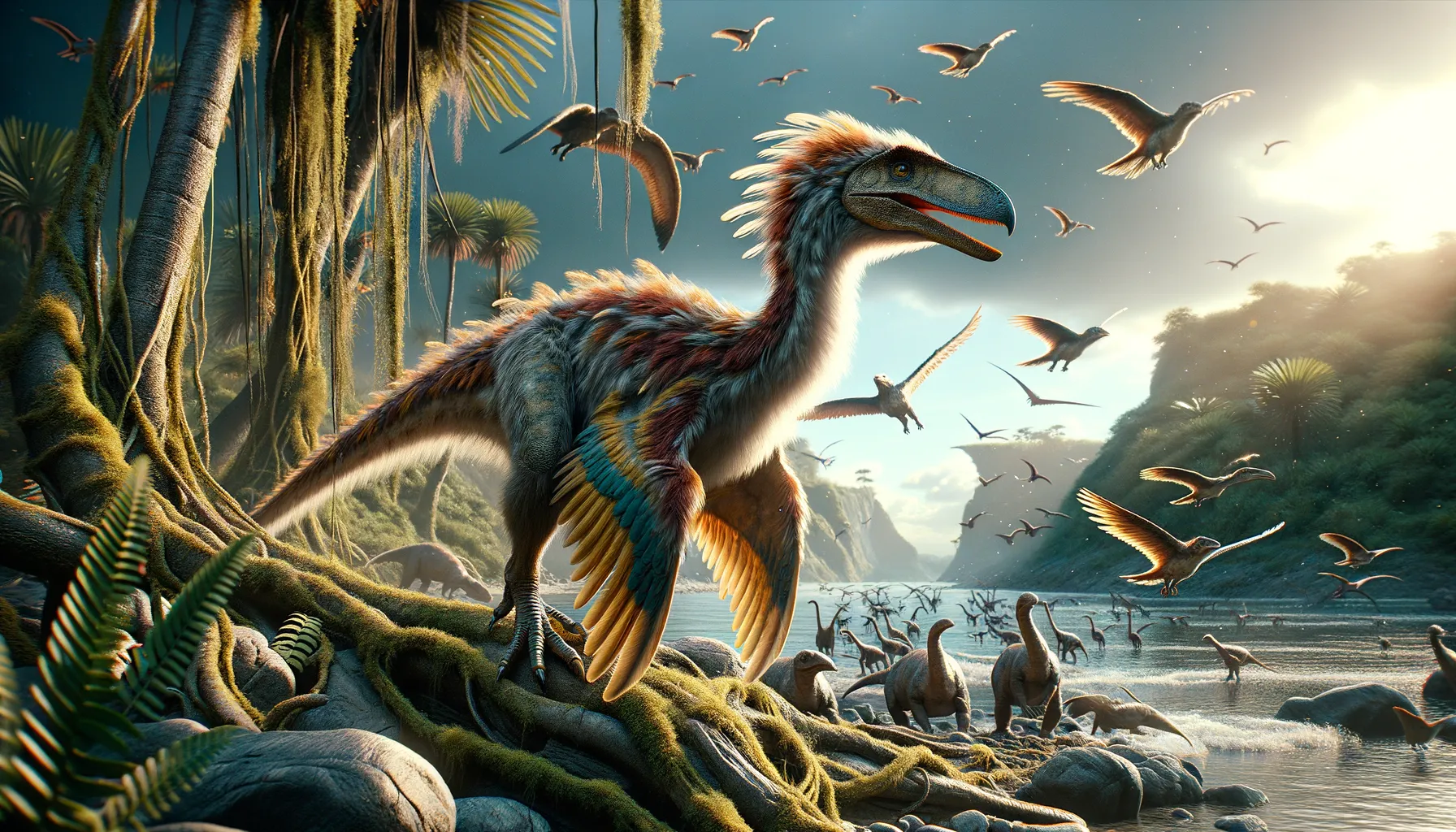
Protarchaeopteryx
Bridging the gap between dinosaurs and birds!
Period
Cretaceous
Length
Approximately 3.3 feet (1 meter) long.
Height
About 2 feet (0.6 meters) tall.
Weight
Weighed around 4 pounds (1.8 kilograms).
Protarchaeopteryx was a feathered dinosaur that roamed the Earth during the early Cretaceous period. Characterized by its small, bird-like frame, it provides a fascinating glimpse into the evolutionary bridge between non-avian dinosaurs and modern birds. The discovery of its fossil in China contributed significantly to understanding the development of feathers and flight in dinosaurs. Though not capable of flight, its feathered body suggests a complex evolutionary history that intrigues scientists and enthusiasts alike.
Diet
Protarchaeopteryx was likely omnivorous, feeding on a mix of plants and small animals. Its teeth suggest an ability to process plant material and small prey, while its overall size limited it to easily captured food sources.
Hunting
It possibly foraged for food rather than actively hunting, using its keen eyesight to find edible plants and insects. Given its slow speed, it was more of a gatherer than a chaser, relying on stealth and surroundings for feeding.
Environmental challenges
Living in the early Cretaceous meant adapting to a rapidly changing world with new predators and competitors. Protarchaeopteryx had to deal with fluctuating climates and the rise of more agile and faster predators. Its feathered body may have helped it regulate temperature in varying environments. Additionally, the competition for food with other small, feathered dinosaurs required it to be versatile in its feeding habits.
Speed
Walked rather than sprinted, slow-moving.
Lifespan
Had a moderate lifespan similar to small birds.
First discovery
Uncovered in northeastern China in the 1990s.
Fun Facts
- Protarchaeopteryx is considered not a true bird but a close dinosaur relative with bird-like features.
- It lived during the Early Cretaceous period, around 120 million years ago, in what is now China.
- Protarchaeopteryx had feathers, but these were not used for flying; instead, they may have been for display or insulation.
- This dinosaur was about the size of a turkey, making it relatively small compared to other dinosaurs.
- Its long tail feathers suggest it was more adapted for stability and maneuverability than for flight.
- Protarchaeopteryx's name means 'before Archaeopteryx,' indicating it lived before the famous 'first bird.'
- Fossils of Protarchaeopteryx were first discovered in China in the early 1990s, contributing to our understanding of the evolution of feathers.
Growth and Development
Protarchaeopteryx likely grew quickly to a size that minimized predation risks. Its development included the growth of feathers, which, although not useful for flight, could have served for display or insulation. Juvenile Protarchaeopteryx might have relied on parental guidance to learn survival skills. The species' growth patterns may have paralleled that of modern birds, indicating a high metabolism.
Habitat
Protarchaeopteryx inhabited forests or wooded areas, rich in vegetation and small prey. Its environment provided ample cover and resources for its survival. These habitats were teeming with diverse life forms, offering both challenges and opportunities for Protarchaeopteryx. The complexity of the ecosystem required adaptation to both terrestrial and arboreal living.
Interaction with other species
The Protarchaeopteryx interacted with a variety of other small dinosaurs, both as competitors and prey. It likely had to avoid larger predators while finding ways to coexist with similar-sized species. Social interactions could have included communication through visual displays using its feathers. Cooperative group behavior might have been limited but possible among closely related individuals.
Natural lifespan
Protarchaeopteryx likely lived up to 10 years in the wild.
Reproduction
Reproductive behavior may have involved laying eggs in nests built on the ground or in low vegetation. Parental care could have been part of their reproductive strategy, protecting eggs from predators. The number of eggs laid could have been relatively small, with a focus on higher survival rates through nurturing.
Social behaviour
Protarchaeopteryx might have exhibited limited social behavior, possibly interacting with others of its kind during breeding seasons. Solitary foraging was probably more common, with occasional loose gatherings when food was abundant. Feather displays might have played a role in social interactions, particularly during mating rituals.
Fossil locations
Fossils of Protarchaeopteryx have been primarily found in the Yixian Formation, Liaoning Province, China. This region is renowned for its rich deposits of early Cretaceous fossils. These deposits have provided valuable insight into feathered dinosaurs and their environment. The preservation of the Protarchaeopteryx fossils in this area has been exceptional, aiding scientific study.
